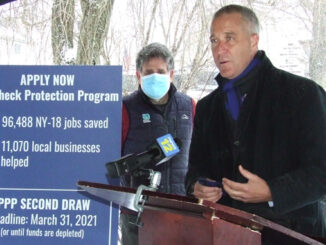
In the early detection of coronavirus
A year and a half had passed since our last interview.
At the time, Dr. Gelman had given me a graph that showed the mortality rate for the pandemic that followed World War I.
The chart resembled the waves in the ocean. There were peaks and valleys. On my recent visit, Dr. Irina Gelman (the county’s health commissioner) gave me another graph.
The pattern was not as obvious, but the information was startling. For more than a year, the county has been engaged in wastewater surveillance. As part of a statewide pilot program, investigators have been testing sewage for the virus that causes COVID.
The study has taken place at six heavily populated locations with wastewater treatment plants. The findings have predicted outbreaks before they occur and before they’re confirmed by lab tests. As a result, the county can take local measures to minimize the spread of the virus.
I assumed that these techniques could also help with the detection of other diseases. What surprised me is that Orange County may have the most robust program in the nation. Dr. Gelman shared this information while reporting that her department had added a statistician and several epidemiologists.
I was impressed but also curious about the graph she had given me in 2020 – the one with the peaks and the valleys. Recently, the number of cases, hospitalizations and deaths has been plummeting. “Are we reaching the end” I asked “or is this another valley?”
I gather that it’s a hard question to answer, because there are factors that didn’t exist with past pandemics. One factor is the availability of vaccines, although the efficiency of these vaccines may vary around the world. Another consideration is global travel. People are more mobile than they were a century ago. An outbreak in the Far East may not take long to reach the United States.
The extinction of COVID might be closer if the vaccination rates were high in every country. In our own nation, the immunization rates for youngsters between ages 5 and 11 is very low. Dr. Gelman searched for the proper explanation – suspecting that some people fear the vaccine more than the disease.
There’s also a perception that children are less likely to be infected. But that notion is contradicted by statistics. About 25 to 30 percent of the COVID cases involve patients who are under 18. That’s probably close to the percentage of young people in the general population.
It’s partially true that COVID doesn’t affect kids as much as adults. Young patients are less likely to be hospitalized (although their number of hospitalizations was up during the omicron surge) and they are less likely to die. But they can suffer other long-term chronic consequences that any parent would want to avoid. These can be respiratory complications or damage to the cardio-vascular, neurological, endocrine or reproductive systems.
So should all kids be vaccinated? Should they continue to wear masks? The County Health Commissioner suggested that if parents have doubts, they should speak to their pediatrician.



